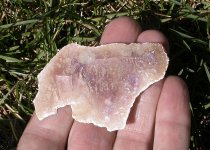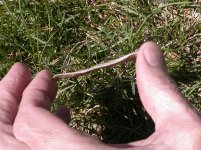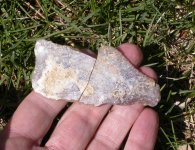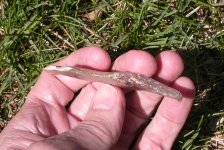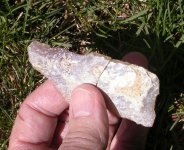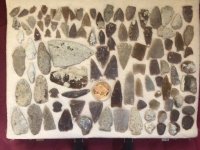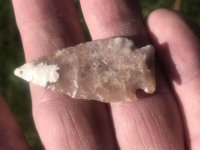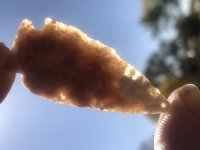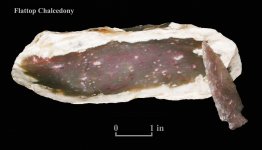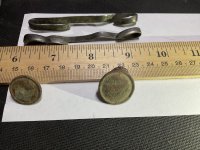11KBP
Hero Member
Platter core reduction flakes from a Plains Clovis assemblage
Two examples of thin flat Clovis bifacial core reduction flakes from a platter type core. The thinner flake is a fairly consistent 3 mm thick except at the bulb. The second flake was refitted from two pieces. It has some fine edge retouch and I assume broke during use as a cutting tool.
The lithic source is Flattop Chalcedony from north eastern Colorado and the documented Clovis site is in north central Kansas. The reason I find these two particular flakes to be interesting is because they provide evidence that this Clovis band still had large bifacial cores in their possession even though they were nearly three hundred miles away from the FTC source.
Two examples of thin flat Clovis bifacial core reduction flakes from a platter type core. The thinner flake is a fairly consistent 3 mm thick except at the bulb. The second flake was refitted from two pieces. It has some fine edge retouch and I assume broke during use as a cutting tool.
The lithic source is Flattop Chalcedony from north eastern Colorado and the documented Clovis site is in north central Kansas. The reason I find these two particular flakes to be interesting is because they provide evidence that this Clovis band still had large bifacial cores in their possession even though they were nearly three hundred miles away from the FTC source.
Attachments
Last edited:
Upvote
0


